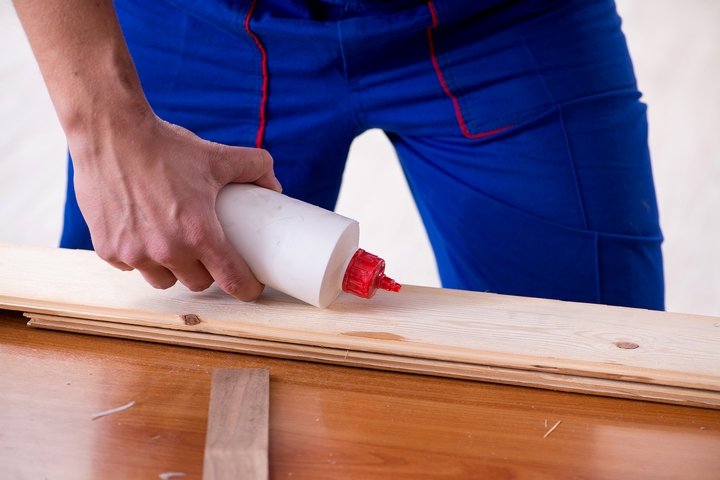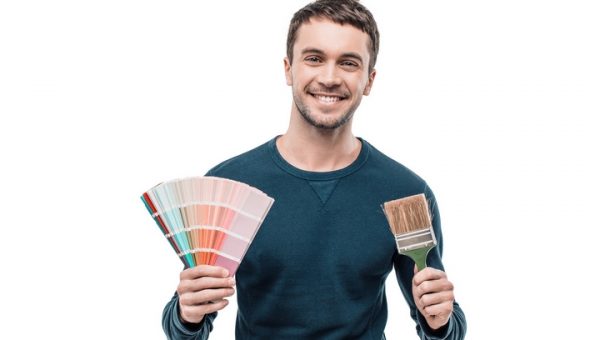There is often no reason to have to replace your hardwood flooring. Often, all that is needed is a really nice refinishing. There are many reasons why refinishing your hardwood floors is a great idea, however top of the list is that it will save you a ton of cash.
Here is a detailed guide on how to refinish hardwood floors in your home:
1. Do your hardwood floors need to be refinished?

What may look like a big refinishing job to you, might be as simple as a fresh clean and wax or polish. A great test to see if the floors need to be refinished completely, is to pour a couple drops of water onto the floor and see if it soaks in immediately or if it takes a few minutes. If the water soaks into the floor immediately, then you should definitely move forward with refinishing it.
2. Should you refinish the floors as a DIY?

In order to to refinish hardwood floors, it’s important to determine the type of wood flooring in your home. There are two types of hardwood floors. If your floors are solid, three-quarter-inch thick hardwood floors, move ahead with the refinishing project on your own. These slabs run the same grain all the way through, so it is unlikely you will damage them beyond repair during your DIY project. But if your hardwood floors are thin slabs, these are layered and require a professional’s hand. Don’t attempt to refinish the thin slabs, or you could end up ruining them.
3. Ready to begin? Prepare your hardwood floors

Obviously your first step is to empty the room of all furniture and other movable objects and decorations, including curtains, pictures and wall hangings. Should any of these get bumped into and drop at any stage of the refinishing process, it could cause some seriously annoying issues. Avoid this altogether by removing them. Also remove shoe molding and doors at this stage. Subsequently cover anything that is left, including windows, baseboards, and other surfaces to protect it as much as possible from sanding dust.
4. To sand or not to sand?

You may be able to avoid sanding, however if the floor is damaged, has wax buildup, or if there are stains on the floor you need to sand it down. If it is in overall good shape, it’s possible you can get away with not sanding them down.
5. How to sand the hardwood floors

You will sand over the hardwood floors three times. The first time will be with a hard grit sandpaper, the second time with a medium grit sandpaper, And the third time with a fine grit sandpaper. Between each run of the sander, you must vacuum the room clean with a brush head vacuum end. After the final pass, you will also mop over the floors with a slightly dampened sponge mop. This will pick up any sandpaper residue that is left.
6. Clean, clean, clean

Sanding dust is a tricky thing – it gets everywhere. Before moving forward with staining and sealing, you’ll absolutely want to clean as much dust out of the room as possible. Remove all plastic coverings that you had applied during the preparation process, and vacuum everything down with a brush ended vacuum. You want to avoid having dust in your space when you move to the next step.
7. Optional: stain

If you would like to change the colour of the hardwood flooring, you can do so by staining it. Skip this step if you would like to maintain the natural hardwood colour. If you are staining, You should use a pre-stain conditioner, and then stain the floors with the desired colour. Once you have completed this step, you can top it off with a polyurethane finish.
8. No stain

If you are not staining then you can simply apply a sanding sealer, and then skip right to coating the floors with the polyurethane finish. The sanding sealer helps to close up the pores within the wood, protecting the wood and creates a smoother finish to the floors.
9. Polyurethane finish

For the most part, you will simply want to follow the instructions on the container of the product you buy. Some require sanding between each coat, while others don’t. There are special applicators that you can purchase, which are intended for specific use with polyurethane. This is because polyurethane easily develops bubbles, which you do not want on your floors. Therefore, when you are applying the polyurethane finish, you want to make sure that you follow the instructions closely in order to avoid bubbles on your finished hardwood floors.
10. Be patient

You need to wait a few days before you can bring all of your furniture back into the room. It is better to wait longer, than not long enough. When you are sure that the polyurethane finish has completely dried, you can bring back all of your furniture, reattach all doors and shoe molding, and other pieces that were originally removed from the room. Now it’s time to enjoy your brand new floors.




